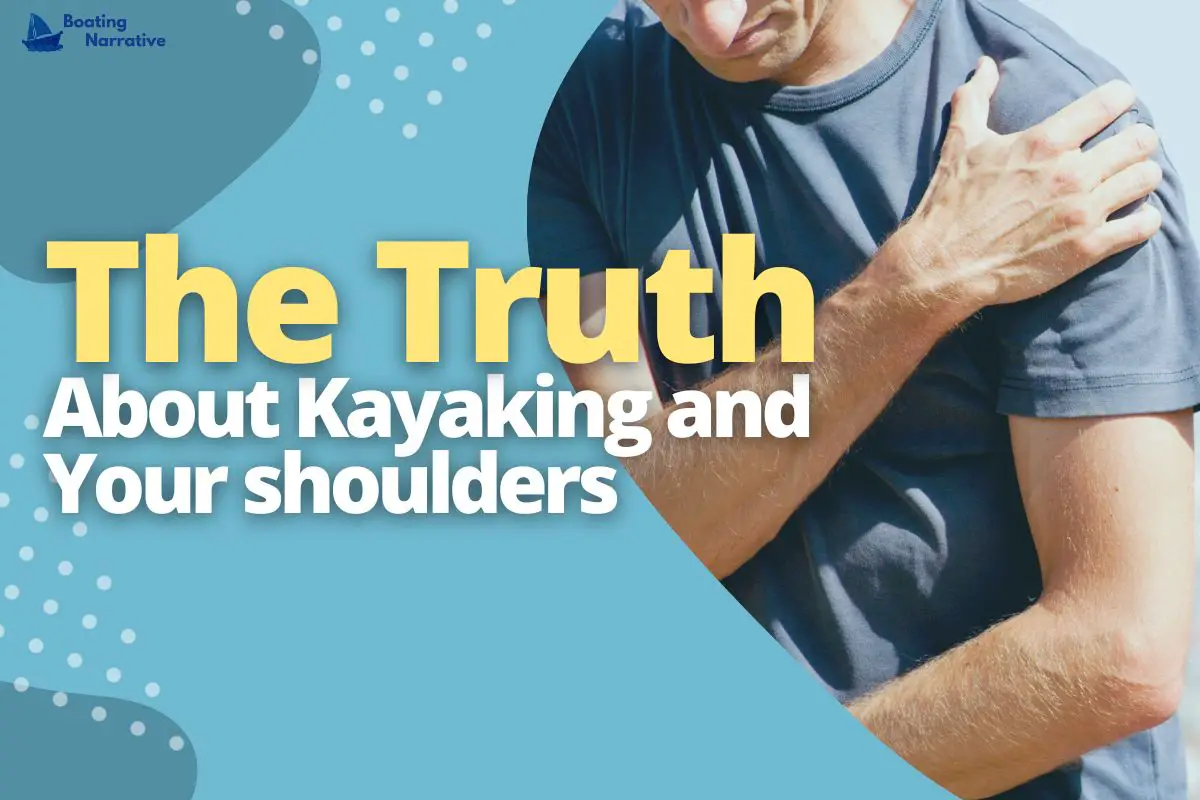Kayaking is a great way to get exercise and practice your paddling skills. But is kayaking bad for your shoulders?
Kayaking is a lot of fun but can also hurt your shoulders. If you’re new to kayaking, here are four tips to help you avoid shoulder pain.
Key Takeaways
- Kayaking is a low-impact activity that is generally considered safe for the shoulders.
- However, kayaking can strain the rotator cuff and other shoulder muscles, leading to injuries.
- It’s crucial to practice good form and technique, warm up, and stretch the muscles before paddling if you want to prevent shoulder injuries while kayaking.
- Also, take frequent breaks to rest the shoulders, and listen to your body if you feel any pain or discomfort.
- If you have a pre-existing shoulder injury, it is best to consult with a doctor before taking up kayaking.
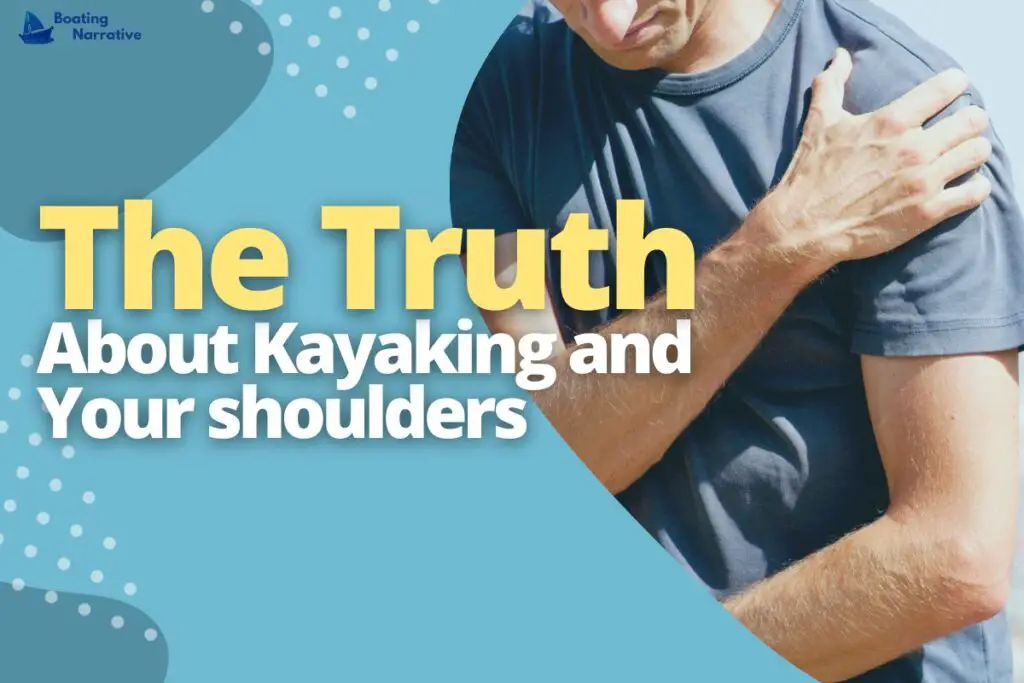
Here’s The Answer To Is Kayaking Bad For Shoulders
The quick answer is yes; improper kayaking techniques can harm your shoulders. The long answer is that it depends on a few factors, including the type of shoulder pain you have, how strong your shoulders are, and what kind of paddling you’re doing.
There are three main types of shoulder pain: rotator cuff tendinitis, bursitis, and impingement syndrome. Rotator cuff tendinitis is inflammation of the tendons in your rotator cuff, a collection of tendons and muscles that helps keep your shoulder joint stable.
Bursitis is inflammation of the bursa, which are fluid-filled sacs that cushion your joints. Impingement syndrome occurs when the bones in your shoulder joint rub together and pinch the nerves and blood vessels around them.
All three of these conditions can be aggravated by kayaking, especially if you don’t have strong muscles to support your shoulders or are using poor technique.
To prevent or lessen shoulder pain when kayaking, you may do a few things.
Kayaking Can Put Strain On The Shoulder Muscles And Tendons
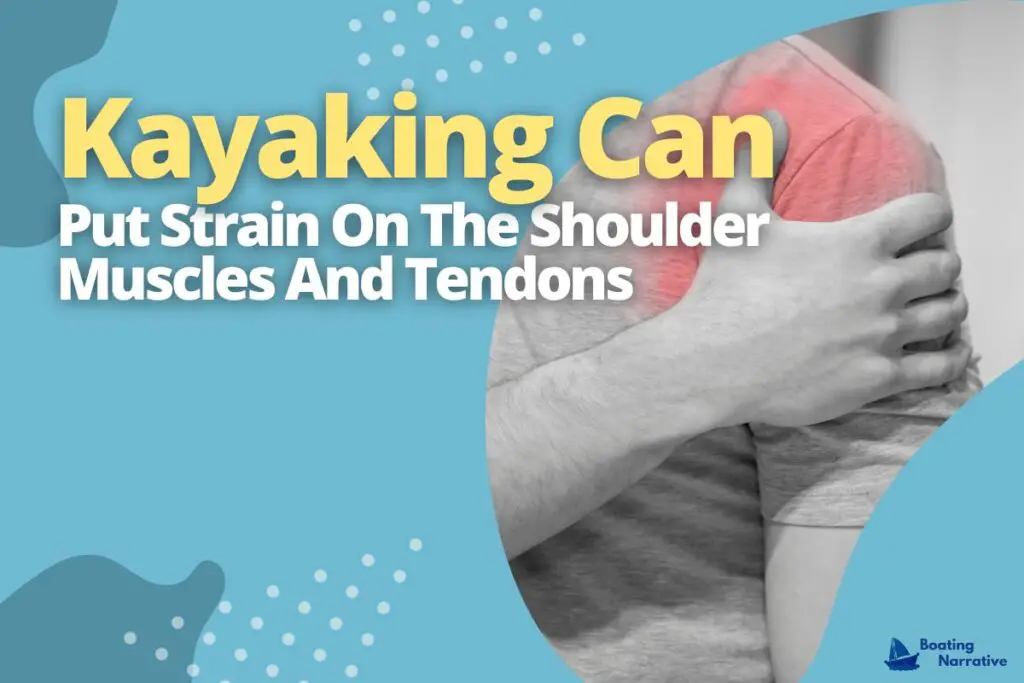
Kayaking is a sport that can put a strain on the shoulder muscles and tendons, which can lead to pain and injury. In addition, the shoulders are vulnerable to overuse injuries from kayaking because they are involved in many motions.
Kayak paddles are held in front of you and then moved back behind you as you paddle forward. This motion transfers weight from one side of your body to the other, so paddlers need to have strong core muscles for balance.
The Rotator Cuff Muscles And Tendons Are Vulnerable To Overuse Injuries From Kayaking
The rotator cuff muscles and tendons are vulnerable to overuse injuries from repetitive motion.
The repetitive motions of paddling can contribute to the development of shoulder impingement syndrome, characterized by pain radiating from your shoulder down your arm.
It can be quite debilitating, a common complaint among kayakers. Fortunately, shoulder pain is often managed with rest, ice, and anti-inflammatory medications (i.e., ibuprofen).
The Repetitive Motions Of Paddling Can Also Contribute To Syndrome
Shoulder impingement syndrome is a condition that can develop from repetitive motions of the arm and shoulder. Paddling is one such motion that can contribute to the development of this condition.
The repetitive overhead motions of paddling can place stress on the rotator cuff muscles and tendons, leading to irritation and inflammation. This can eventually lead to shoulder impingement syndrome.
Symptoms of shoulder impingement syndrome include pain, weakness in the shoulder, and loss of range of motion. Effective paddling may be challenging due to these symptoms. If you are experiencing these symptoms, you must see a doctor for an accurate diagnosis and treatment plan.
There are several ways to prevent shoulder impingement syndrome from developing.
- Be sure to warm up properly before paddling.
- Avoid excessive overhead motions of the arm by using a stroke that keeps the arm closer to the body.
- Use proper technique when paddling – avoid jerky or uncontrolled movements.
- Take breaks often to rest the shoulder muscles and tendons.
I have personally experienced shoulder impingement syndrome from paddling. After years of competitive paddling, I began to experience pain and weakness in my right shoulder. As a result, I was diagnosed with shoulder impingement syndrome and had to take a break from paddling for several months to allow my body to heal correctly.
Now, I am careful to warm up properly before paddle sessions, use proper technique, and take breaks often so I don’t aggravate my condition.
Shoulder Pain Is A Common Complaint Among Kayakers
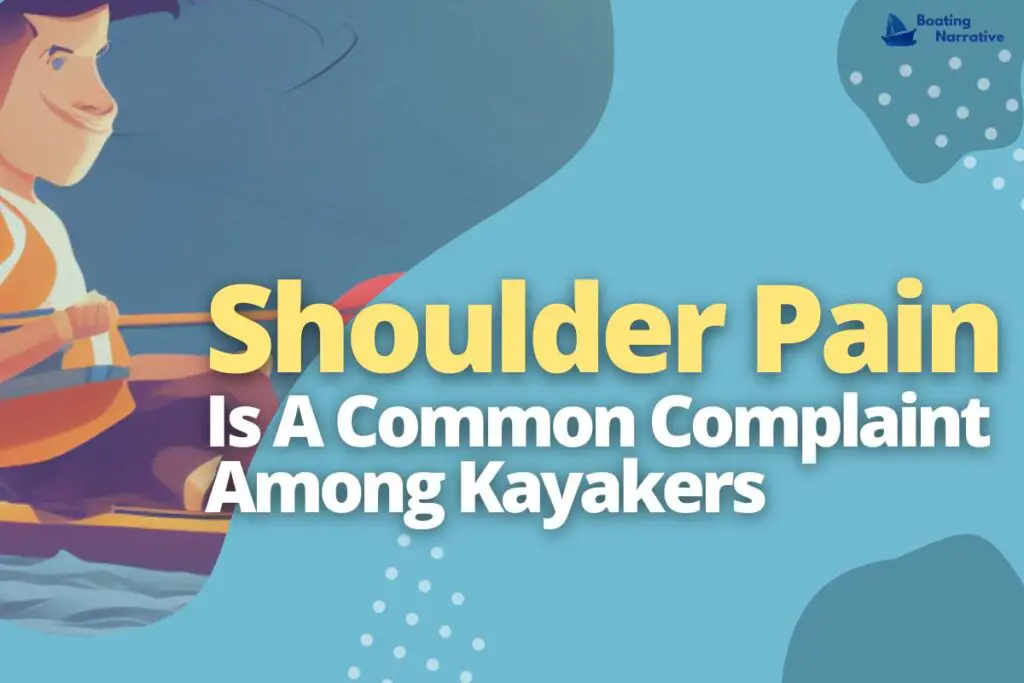
You don’t have to be a champion kayaker to experience shoulder pain. However, shoulder pain can happen to even the most experienced paddlers, and it’s essential to know when you should seek medical attention.
Shoulder injuries are very common in kayaking, in part due to the frequent paddling motions and how near to your body your arms are while paddling.
If you find yourself experiencing shoulder pain while paddling or after getting out of your boat, consider these tips:
- Rest – If possible, rest from paddling until symptoms improve. This could entail paddling less often during extended periods on the water or taking an additional day off from kayaking each week until it gets better.
- Ice – Apply ice packs (or cold packs if you have them) for 10-20 minutes frequently throughout each day as needed for pain relief and swelling reduction.
- Anti-inflammatory medications – Non-steroidal anti-inflammatory drugs (NSAIDs) such as ibuprofen may help relieve inflammation and swelling associated with overuse injuries like those sustained from paddling too much too soon after a period of rest or limited mobility due to injury recovery time; consult with your doctor before using any medication regularly though.
If Shoulder Pain Persists, See A Doctor Or Physical Therapist
It is important to visit a doctor or physical therapist if you experience chronic shoulder pain. They can assist you in determining the source of your discomfort and the best next steps.
A physical therapist will usually recommend using ice and heat to help relieve swelling and discomfort while also providing exercises that will strengthen your shoulders without putting additional strain on your joints.
A good way to find a reputable doctor or physical therapist is by asking friends and family members for recommendations—or even just Google searching for “best sports medicine doctor in” or “specialists near me”; this should yield numerous results from which you can choose someone qualified enough for your needs.
With Proper Care And Precautions, Kayaking Can Be Enjoyed Without Causing Shoulder Pain Or Injury
As an avid contributor in the field of kayaking, I have a fair knowledge of the topic and would like to share my views on the same.
With proper care and precautions, kayaking can be enjoyed without causing shoulder pain or injury. However, if kayakers do not take the necessary precautions, they may experience shoulder pain or injuries.
How Does Kayaking Affect The Shoulders?

There are a few different ways that kayaking can affect the shoulders.
- Suppose you have poor posture while kayaking; it can put unnecessary strain on the muscles and tendons in your shoulders. This can lead to pain or discomfort in the shoulders and other parts of the body.
- If you frequently paddle with improper technique, you may also experience pain or discomfort in your shoulders.
- If you paddle for long periods without taking breaks, your shoulders may become tired and sore.
- If you are not properly fitted for your kayak, it can also cause pain or discomfort in your shoulders.
The Benefits Of Kayaking For The Shoulders
There are many benefits of kayaking, but one that is often overlooked is the impact it can have on your shoulders. Kayaking can be an excellent way for persons with shoulder pain or injuries to get some exercise while preventing further harm.
One of the main benefits of kayaking for the shoulders is that it helps to strengthen the muscles and tendons around the joint. Both current pain and potential future injuries may be lessened as a result.
Kayaking also helps increase the range of motion in the shoulder joint, which can be helpful for those who have suffered from stiffness or immobility.
Another benefit of kayaking is that it is a low-impact exercise. Less strain on the joints and connective tissues results from this, which may assist in lessening pain and inflammation.
People with chronic shoulder pain often find that high-impact activities like running or jogging worsen their symptoms, but kayaking provides a gentle workout that does not aggravate existing pain.
The Importance Of Shoulder Mobility
The range of motion your shoulder joint can travel through depends on shoulder mobility. It’s vital for kayaking because it’s one of the main factors determining how well you can paddle, bounce back from injury and avoid injuries altogether.
Fortunately, there are several simple exercises that you can do to improve your shoulder mobility. These exercises will help increase the flexibility in both shoulders and help prevent common injuries such as rotator cuff tears and bursitis.
To test whether your shoulder mobility could use some work:
- Stand with your arms at 90 degrees from your side (by this point in the article, I hope we’ve established that this is called “shoulder height”).
- Have someone pull down on one hand while pushing up on the other hand until your arm moves about 45 degrees forward (so roughly halfway between straight out and horizontal).
- If you cannot get 45 degrees no matter how much force they apply or if their efforts cause pain in either shoulder joint, then you likely need some work on improving shoulder mobility.
The Risks Of Kayaking For The Shoulders
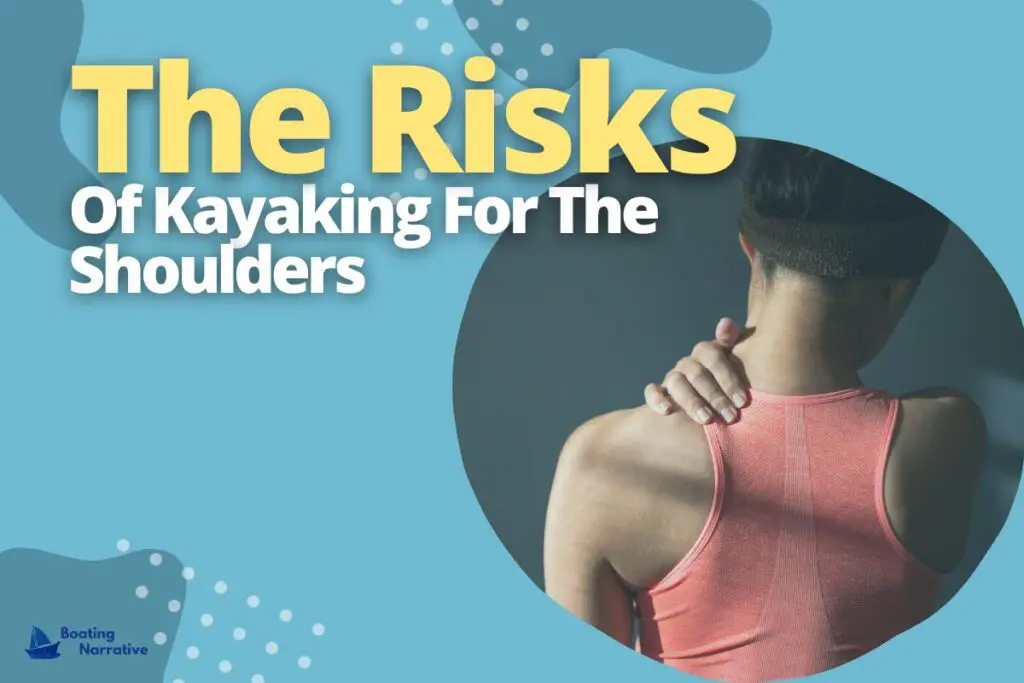
When it comes to kayaking, several risks can affect your shoulders. The most common injuries include shoulder impingement syndrome and rotator cuff injury.
Shoulder impingement syndrome occurs when the shoulder joint is inflamed from repetitive paddling motions.
A quick movement during a fall or contact with another watercraft or underwater object might cause a rotator cuff tear.
Who Should Avoid Kayaking?
If you have any of the following conditions, then kayaking may not be for you:
- Pre-existing shoulder injuries.
- Pre-existing shoulder pain.
- Pre-existing shoulder instability.
- A history of surgical operations on your shoulders and arms (such as rotator cuff repair).
If you fall into any of these categories, consult your healthcare provider before taking up a new sport like kayaking.
How to Prevent Shoulder Injury While Kayaking?
There are several things that kayakers can do to prevent shoulder pain or injuries.
- You should warm up before paddling.
- You should use the proper paddling techniques.
- You should use the right size paddle.
- You should take breaks often.
- You should stretch after paddling.
- Wear a life jacket. A life jacket offers more support than a PFD (personal flotation device). It also provides extra protection if you fall out of your kayak mid-stream or off an ocean beach into dizzying depths below.
- Avoid paddling during high winds or rough water conditions; always wear special gear such as helmets when riding bikes through heavy traffic at night while drunk driving after consuming too much alcohol before work leaves early morning shift due to getting sick before arriving home safely with wife and kids present.
If kayakers follow these tips, they can enjoy kayaking without experiencing shoulder pain or injuries.
Conclusion
Overall, kayaking is a low-impact activity unlikely to cause significant shoulder pain. However, as with any repetitive motion, overuse injuries are at risk.
To avoid these, stretch your shoulders before and after paddling and take breaks as needed. If you begin to feel pain, consult a doctor or physical therapist for guidance on modifying your technique or choosing different kayaking equipment.
So there you have it! Is kayaking bad for shoulders? Probably not, but there are some things to keep in mind to avoid injuries. Be sure to follow the tips above and listen to your body—if something hurts, don’t push through the pain.
And finally, check out other great articles on our website for more information on staying safe and healthy while enjoying all your favorite activities.

